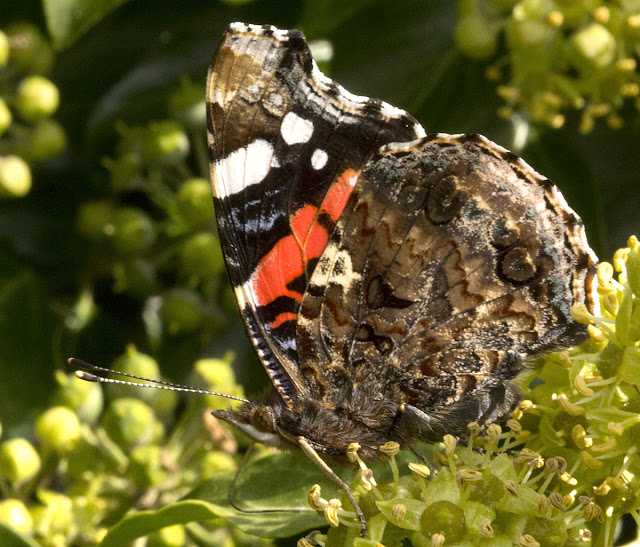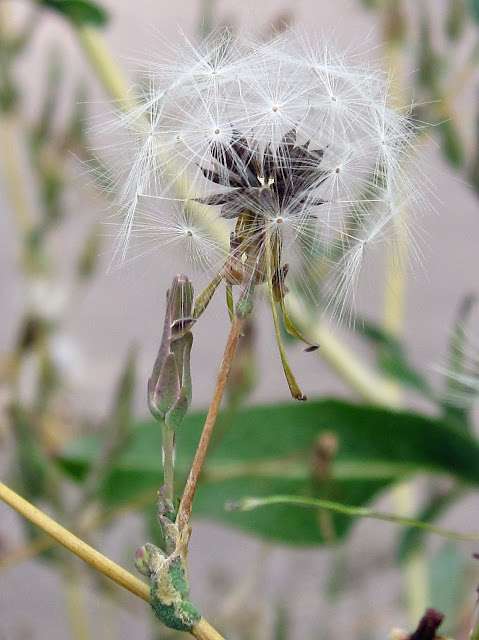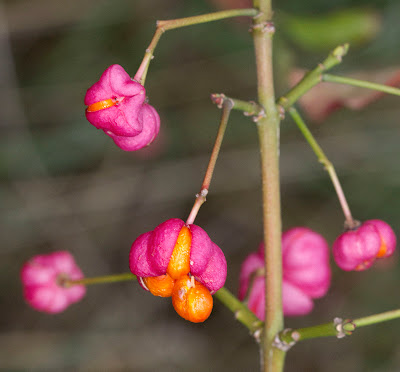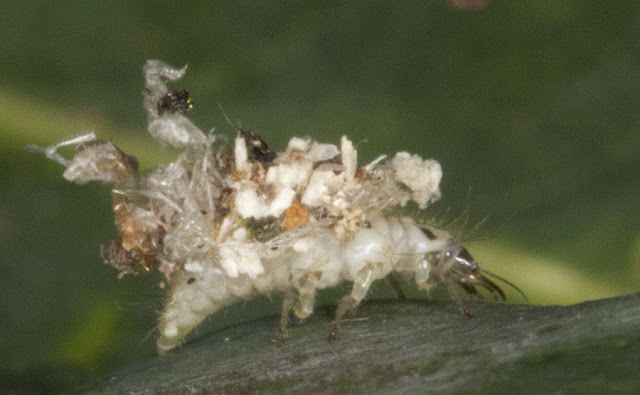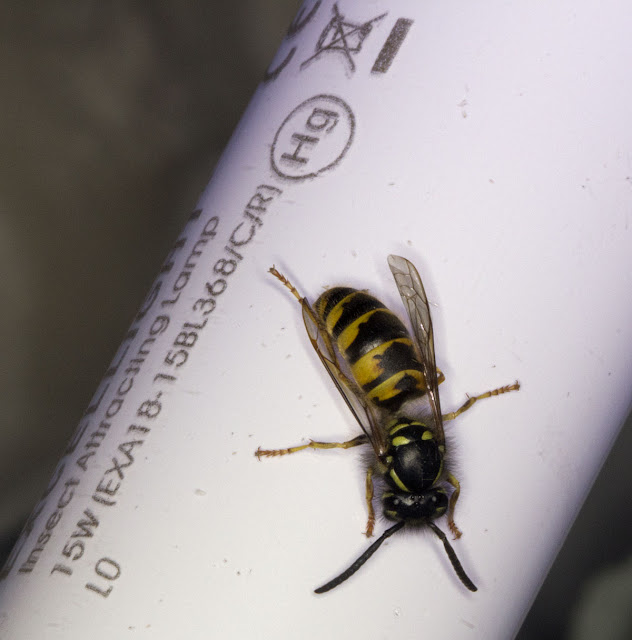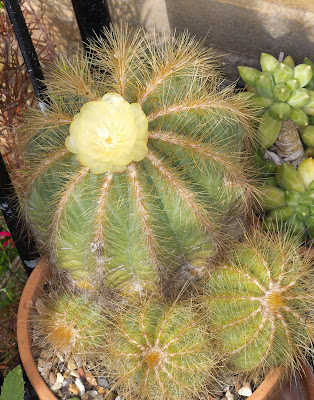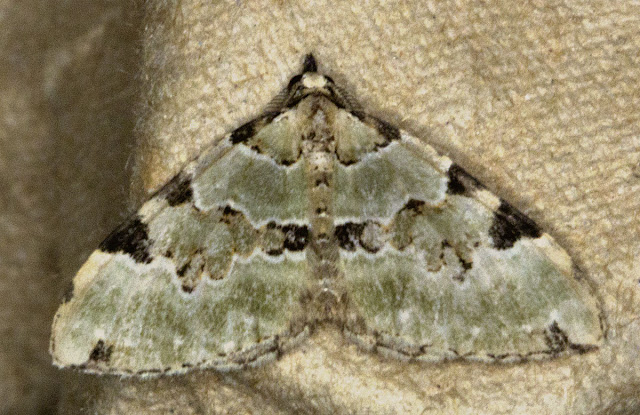 |
| Unidentified micromoth. Moth trap in Hayes, 25 August 2011. |
So, I got my own moth trap. It's a small Skinner type with an actinic bulb, a small strip light that gives of a lot of ultraviolet, great for attracting insects and not very bright to our eyes to cause minimum disturbance to the neighbours.
But it seems very bright in the dark of night. Still, none of the neighbours have mentioned it to me, and I have had it out three times now.
I put it out for the first time on the night of 24th August. I didn't know what to expect, and I suspected I would only get a few like the one on the right, but actually there were a couple of dozen moths in there the next morning, hiding among the egg boxes.
Two of them were quite distinctive, and I was able to use my books to identify them, but I was really stuck on the rest. Luckily for me, Gill Peachey offered to look them over and identified quite a few, some definitely and some tentatively. It's not so easy to identify them from photos. I saw later that Gill likes to actually hold the live specimens over the books to compare with the diagrams and photos.
Some moth people ignore the micromoths, because so many of them are hard to identify. A couple of the people from the Keston Common exercise back in July seemed confident, but some are impossible to separate without a microscopic examination. But others are easy, and this Chequered Fruit-Tree Tortrix is one of them. It's quite common, and its caterpillars eat the rolled leaves of deciduous trees.
 |
| Chequered Fruit-Tree Tortrix, Pandemis corylana. A Micromoth. Moth trap in Hayes, 25 August 2011. |
I also had this furry creature, an Orange Swift. Its caterpillars live underground for two years eating the roots of herbaceous plants such as bugloss, dock, bracken and dandelion. This is a female.
 |
| Orange Swift, Hepialus sylvina. Female. A Cossid. Moth trap in Hayes on 25 August 2011. |
Among the larger moths were several of these, which Gill identified as Copper Underwings. The Underwing group have brightly coloured rear wings that don't show until they fly. But there are other ways to recognise them, and after some tuition I can now spot this one. It's common in woods, parks and gardens and its caterpillars eat many low-growing trees and shrubs.
 |
| Copper Underwing, Amphipyra pyramidea. A Noctuid. Moth trap in Hayes on 25 August 2011. |

















